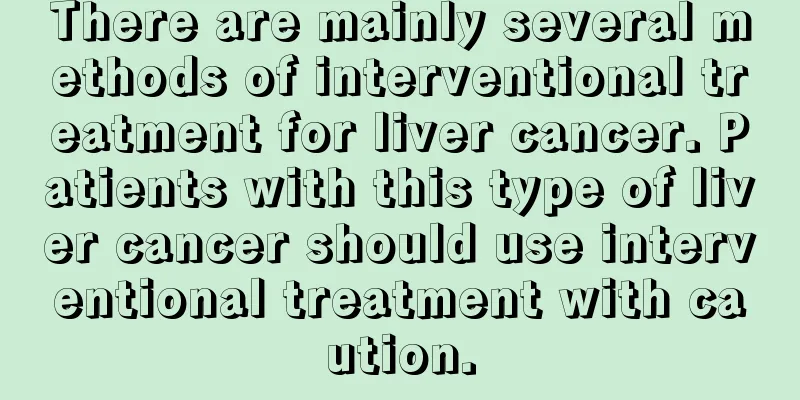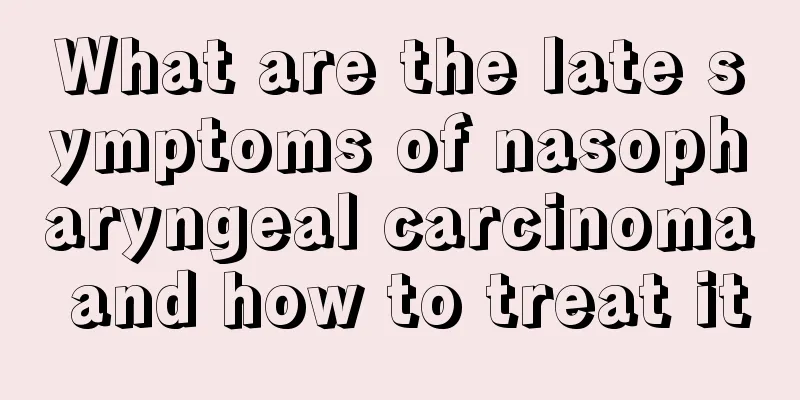There are mainly several methods of interventional treatment for liver cancer. Patients with this type of liver cancer should use interventional treatment with caution.

|
In our daily work, most of our interventional treatments are for patients with liver metastases. The most common are liver metastases from lung cancer, breast cancer, and digestive tract tumors, as well as female genital tumors and urinary system tumors. These tumors are prone to liver metastasis, especially digestive tract tumors. Interventional treatment for liver metastases from digestive tract tumors and breast cancer is very effective, better than systemic chemotherapy. However, because interventional treatment can cause serious damage to liver function, it should be used with caution in patients with impaired liver function. If patients with advanced liver cancer insist on interventional treatment, they may wish to choose some efficacy-enhancing and toxic-reducing Chinese medicines during the treatment. There are several main interventional treatments for liver cancer: (1) Infusion chemotherapy: Infusion chemotherapy is a treatment method that concentrates forces to attack tumors. It is to inject drugs directly into the liver cancer through an arterial catheter. After the catheter is sent to the hepatic artery through the peripheral artery, the drug is directly injected into the lesion in the liver through the catheter. Compared with traditional intravenous administration (infusion), it has lower systemic toxicity; at the same time, due to the use of selective arterial perfusion, the drug concentration in the liver cancer can be increased. Without increasing the dosage, the drug concentration in the liver cancer tissue can be 5-20 times higher than that in normal tissue, thereby effectively improving the treatment effect. (2) Transcatheter embolization: In our battle against tumors, in addition to concentrating superior forces to attack, there is another strategy, which is to cut off the enemy's food supply and thus make the enemy lose its combat capability. Transcatheter embolization uses this treatment strategy. After inserting a catheter into the hepatic artery, angiography is used to find the tumor's nutrient vessels, and then the embolic agent is perfused through the catheter to block the tumor's blood vessels, thereby blocking the tumor's blood supply and nutrition. Its principle is as follows: Normal tissues and organs generally have only blood supply arteries and drainage veins. Blood enters the tissues from the arteries and flows out of the tissues from the veins. The liver is different from general tissues. Not only does it have its own blood supply arteries and drainage veins (i.e., hepatic arteries and hepatic veins) like other tissues, it also has a portal vein to supply nutrition. In other words, the liver receives dual blood supply from the hepatic artery and portal vein; of which the hepatic artery supplies 25% of the blood and the portal vein supplies 75% of the blood. Liver cancer is different. Its blood supply comes from the hepatic artery 95%-100%. After embolization of the hepatic artery, the blood supply to liver cancer is reduced by more than 90%, while the blood flow to normal liver tissue is only reduced by 30%-40%. Therefore, if the embolic agent is only injected into the artery that supplies blood to the tumor, it can cause ischemic necrosis of cancer tissue, while having little effect on normal liver tissue. Currently, transcatheter arterial chemoembolization (TACE) has become the first choice for non-surgical treatment of liver cancer that cannot be surgically removed. (3) Interventional treatment via portal vein: The liver has a dual blood supply. In some patients, the tumor is supplied with nutrients from the branches of the portal vein in addition to the blood supply from the arteries. In this case, in order to achieve a better treatment effect, in addition to the transhepatic arterial chemoembolization we introduced above, a catheter can be inserted into the portal vein through percutaneous puncture to infuse chemotherapy drugs and embolic agents. The chemotherapy drugs flow in the portal vein at low pressure and low flow rate, and continuously and persistently contact tumor cells, exerting an anti-cancer effect. This method is particularly effective for tumors that have metastasized to the liver from other parts of the body. |
>>: What are the typical symptoms of early lung cancer? 3 typical symptoms of early lung cancer
Recommend
Is esophageal cancer contagious?
Esophageal cancer actually refers to a malignant ...
What is the use of Tianna water
Thinner is the common name for banana water, whic...
What are the symptoms of advanced lung cancer? Four common symptoms of advanced lung cancer
When lung cancer is in the late stage, many peopl...
Glycated hemoglobin 9
Many people often have some different changes in ...
Psychological analysis of speaking without considering the person
Everyone knows that when communicating with other...
People should always pay attention to the care methods of lymphoma
In recent years, the incidence of lymphoma has be...
What are the specific diets during radiotherapy for nasopharyngeal carcinoma
What are the diets for nasopharyngeal carcinoma p...
What are the harmful effects of salicylic acid in acne treatment?
Acne is a symptom caused by endocrine disorders o...
What are the symptoms of throat cyst
The problem of pharyngeal cysts cannot be ignored...
What are the symptoms of early and late stage lung cancer
Lung cancer is a disease name used in both Chines...
What is the diet for patients with rectal cancer after surgery
In life, rectal cancer is a common malignant tumo...
Will drinking Chinese medicine to replenish qi and blood make you sleepy?
Many people will find that they become drowsy aft...
What is anal leakage? Be alert if you have pus and pain
Anal leakage can cause repeated pus discharge, an...
What to use to remove oil from face
People often tell you that you have an greasy fac...
5 necessary stages of fatigue turning into illness
Mild fatigue, eat a small amount of sweets Fatigu...









